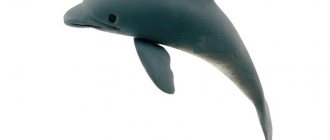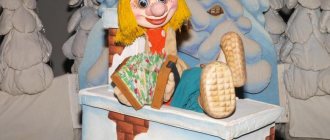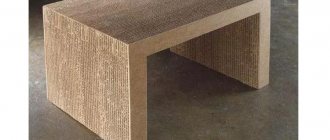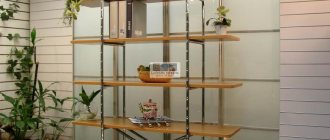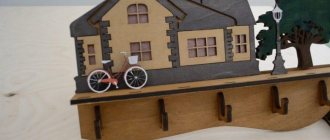The important, glowing Russian samovar is a colorful hero who has migrated from fairy tales and poems to children's plays and holidays. In order to create such an image, you need an appropriate suit. Many parents wonder how to make a samovar costume for a child using available materials? After all, you need to convey its volume, and also make a separate faucet and teapot.
In this article you will find several ways to solve this problem. We will tell you how to make a costume for children with your own hands.
DIY samovar costume for children
The important, glowing Russian samovar is a colorful hero who has migrated from fairy tales and poems to children's plays and holidays.
In order to create such an image, you need an appropriate suit. Many parents wonder how to make a samovar costume for a child using available materials? After all, you need to convey its volume, and also make a separate faucet and teapot. In this article you will find several ways to solve this problem. We will tell you how to make a costume for children with your own hands.
How to make a samovar costume
Despite the fact that at first glance the idea itself may seem difficult to implement, in fact, the level of difficulty is determined by you yourself.
Simpler options are created faster. However, if you spend more time and materials, the result will be more solid and elegant. We offer several ideas for you to choose from.
Made from fabric and foam
Materials
To work you will need:
Completing of the work
IMPORTANT! If you do not need a large volume or want to make the suit more mobile, you can use padding polyester instead of foam rubber.
You determine the shape of the base to your taste. It may have three holes for the head and arms. Or one large one, through which the entire upper body is threaded. But then the base should be held securely under the arms, without squeezing the torso.
From fabric
If you don’t have foam rubber or padding polyester, for a boy you can sew an ordinary sleeveless shirt from brocade .
You need to leave more fabric in the belly area for a “pot-bellied” appearance and gather the hem with an elastic band. This will be our basis. The sleeves can be sewn separately or worn underneath the shirt. You can also combine the two by sewing short, wide gold brocade sleeves onto the base and wearing a white shirt underneath.
For a girl, you can sew a dress from the same brocade. The volume of the samovar can be conveyed through a fluffy skirt, which can also be tapered downwards. To do this, you need to wear a fluffy petticoat underneath, which should not be visible. Another option is to make your own structure from hoops or, again, foam rubber.
From paper or cardboard
If you don't want to bother with sewing, there are easier and more economical ways to create a samovar costume. For this you will need large format paper and old cardboard boxes from large household appliances .
IMPORTANT! It is recommended to use light weight paper to reduce the risk of it peeling off.
So, we got two halves of the samovar: front and back. All that remains is to fasten them on top with straps that will hold on the child’s shoulders. To ensure stability of such a suit, you can also put straps on the sides from below.
Samovar faucet
A separate issue is the creation of a crane.
Many people do not recommend adding such an element at all, since it may look incorrect, especially if located close to the groin area. However, this problem has a solution. The tap may be located in the solar plexus area . Appliques made of fabric or colored paper in the form of eyes are attached above it, and below it in the form of a mouth. Then it does not cause inappropriate associations.
The crane itself can also be drawn and cut out, like an applique. You can also make a three-dimensional form from foam rubber or padding polyester covered with fabric.
Let's look at the basics of making life-size puppets using the example of French Fries and Hamburger dolls.
Life-size puppets French Fries and Hamburger are simple in the configuration of their bodies. They can be made in a simplified manner, without frames (complex life-size puppets are made on a frame - usually steel wire with a diameter of 5 mm)
The French Fries life-size puppet costume will look like this:
Dimensions of the doll are 80x100 cm.
Cut out the figured front wall of the costume.
It should be shaped like a cardboard cup of French fries. Cut holes for the arms.
On the inner side, we cover the foam rubber with calico or double thread. The most convenient way to do this is to first grab the fabric around the perimeter of the mold with Moment-universal or 88 glue. It is impossible to completely glue the entire surface.
We sew the fabric to the foam rubber with large stitches. In hard-to-reach places - on folds, cutouts for the artist's hands - we cut the fabric and glue it.
We cut out the back of the life-size doll. It is equal in width to the front wall. The height is, of course, higher.
We also cover this part with cotton fabric on one, inner side.
Attention! If a solid sheet of foam rubber is not enough, it can easily be glued together from pieces of Moment-universal or “88” foam rubber glue.
Now let’s make something on which the entire structure will be attached.
This simple system is sewn from wide, rigid and durable tapes - slings.
Two slings pass along the shoulders (closer to the head), one transverse on the chest, one on the back. The resulting rectangular “window” should allow a person’s head to fit freely through it.
Now you need to place both halves of the future life-size puppet on sewn slings and, thereby, connect the front part and the back.
We try on a mannequin or a person the optimal level at which the slings need to be attached, so that the foam rubber does not impede the work of a person in this life-size doll suit, we equalize (cut) the lower edges of the back and front.
At the intended level, on the outer, unlined sides of the foam rubber, glue strips of fabric. From the inner, sheathed side, we cut through the fabric and foam rubber, insert the ends of the slings and pull them out. Sew to the glued strip of fabric. This results in a strong attachment of the belts to the foam rubber.
We attach two slings to the back, two to the front of the doll.
We sew both halves on the sides, not reaching 10 centimeters from the bottom for freedom of step.
This is what happened at this stage
We cover the outer foam planes of the growth suit. This way, the front and back of the suit will be trimmed on all sides.
Important! When making such large-scale forms from foam rubber, it must be sheathed with double-thread or calico on both sides - this levels the surface and will be necessary for further work.
Let's start making the upper part of the costume, which is put on the head. It will be removable.
We build some kind of hard hat - ours is made on a frame made of rigidine, covered with double thread, and lined.
From foam rubber 20 mm thick we construct something like a welder’s helmet. Cut a hole for the face in the right place.
We adjust the helmet to the main suit. We sew it at several points to the hat.
We bend an oval from wire with a diameter of 2-3 mm. We glue it, in places we sew it, to the edges of the foam helmet and to the hat.
We connect the ends of the wire as follows: fold them overlapping and wrap them tightly and tightly with ordinary bobbin threads. You can coat the top with Moment Crystal glue.
We cover this entire structure in the same way as the main suit, with calico.
We put a “gloss” on the outside: we line the foam cup with bright red knitwear, and the hat with yellow. The opening for the face is lined with knitted mesh. We sew “fried potatoes” onto the top of the “cup” and onto the cap. We made it from blocks of foam rubber and covered it with yellow knitwear.
Finishing touches - use brown paint from an aerosol can (preferably acrylic) to tint the potatoes
Making a Hamburger life-size puppet costume
It gets a little more complicated.
Our ultimate goal is:
The shape of the front and back walls of the suit is oval. Dimensions 80x100 cm. We use foam rubber 50 mm thick.
Headdress - teapot
It is made according to the same principle as the suit itself.
Moreover, cardboard and fabric options can be completely combined with each other. First, the cap itself is made . It can also be voluminous, the shape is given by foam rubber or padding polyester. The top is lined with the same fabric as the main suit.
Separately, synthetic padding parts are created: spout, handle, lid. They are also covered with fabric and attached to the main headdress: a spout and handle on the sides, a cap on top.
A teapot can also be made from a small piece of thick cardboard. You need to cut out the silhouette and color it, and then secure it on your head with an elastic band. Make sure that this design does not fall over the eyes and does not squeeze the child’s head.
What to combine with a samovar costume
Under the bottom of such a suit, black or white clothes are worn . It is allowed to use items that match the main color or with decorative elements made from the same fabric as the base.
Shoes depend on the child's actions in the performance. If he needs to move a lot, then these should be Czech shoes of the same color as the bottom . They can also be decorated with fabric from the base. If dance numbers are not expected, then you can put the child in elegant sandals of the same color as the base.
A colorful detail can be beads made from bagels or dryers on the neck , and, of course, rosy cheeks .
Source
How to make a samovar costume
Despite the fact that at first glance the idea itself may seem difficult to implement, in fact, the level of difficulty is determined by you yourself.
Simpler options are created faster. However, if you spend more time and materials, the result will be more solid and elegant. We offer several ideas for you to choose from.
Made from fabric and foam
Materials
To work you will need:
Completing of the work
IMPORTANT! If you do not need a large volume or want to make the suit more mobile, you can use padding polyester instead of foam rubber.
You determine the shape of the base to your taste. It may have three holes for the head and arms. Or one large one, through which the entire upper body is threaded. But then the base should be held securely under the arms without squeezing the torso.
From fabric
If you don’t have foam rubber or padding polyester, for a boy you can sew an ordinary sleeveless shirt from brocade . You need to leave more fabric in the belly area for a “pot-bellied” appearance and gather the hem with an elastic band. This will be our basis.
The sleeves can be sewn separately or worn underneath the shirt. You can also combine the two by sewing short, wide gold brocade sleeves onto the base and wearing a white shirt underneath.
For a girl, you can sew a dress from the same brocade. The volume of the samovar can be conveyed through a fluffy skirt, which can also be tapered downwards. To do this, you need to wear a fluffy petticoat underneath, which should not be visible. Another option is to make your own structure from hoops or, again, foam rubber.
From paper or cardboard
If you don't want to bother with sewing, there are easier and more economical ways to create a samovar costume. For this you will need large format paper and old cardboard boxes from large household appliances .
IMPORTANT! It is recommended to use light weight paper to reduce the risk of it peeling off.
So, we got two halves of the samovar: front and back. All that remains is to fasten them on top with straps that will hold on the child’s shoulders. To ensure stability of such a suit, you can also put straps on the sides from below.
Samovar faucet
A separate issue is the creation of a crane. Many people do not recommend adding such an element at all, since it may look incorrect, especially if located close to the groin area. However, this problem has a solution.
The tap may be located in the solar plexus area . Appliques made of fabric or colored paper in the form of eyes are attached above it, and below it in the form of a mouth. Then it does not cause inappropriate associations.
The crane itself can also be drawn and cut out, like an applique. You can also make a three-dimensional form from foam rubber or padding polyester covered with fabric.
LiveInternetLiveInternet
-Music
—Categories
- Psychology, Spirituality (1361)
- New time lunar calendar (856)
- Invitations (274)
- My impressions and recommendations (217)
- From various sources (20)
- NEW YEAR. (226)
- New Year's table (133)
- outfits, decoration, crafts, gifts for the New Year (89)
- Communication (45)
- My impressions (15)
- Fashion and style (23)
- This is a must read for everyone! (35)
- My culinary recipes! (61)
- My creative works! (7)
- Knitting (8199)
- Pullovers, cardigans, sweaters (1760)
- Dresses, tunics (1349)
- Tops, blouses (1270)
- Jackets, blouses (934)
- Magazines, books, websites, links (408)
- Sets, swimsuits (402)
- Hats, scarves, mittens, capes, shawls (371)
- Patterns, motifs, flowers, utilities (363)
- Boleros, shrugs, capes (321)
- Children (271)
- Accessories (214)
- Coats, jackets (212)
- Skirts, trousers, shorts (204)
- Men (157)
- Blankets and other items for the home (132)
- Socks, slippers, leg warmers (58)
- Toys (39)
- Ideas (33)
- I’ll definitely tie you up!” I swear to my mom! (thirty)
- Knitting with beads (9)
- Cookbook (4506)
- Unsweetened pastries, casseroles (756)
- Salads (685)
- Snacks, sauces (500)
- Vegetables, side dishes (479)
- Chicken (367)
- From fish and seafood (318)
- From minced meat (258)
- From meat (233)
- Lenten dishes (178)
- From liver, offal (134)
- Breakfasts, quick hot dishes (133)
- Soups (109)
- Menus, magazines, recipe collections (102)
- Dumplings, dumplings (51)
- From mushrooms (50)
- Blanks (40)
- bread machine (13)
- for a picnic (8)
- Desserts (2955)
- Cakes (851)
- Pies (841)
- Cookies, cake (728)
- From cottage cheese (242)
- Pancakes, pancakes (129)
- Jellies, creams, jams, preserves (121)
- Dough (76)
- Drinks, sweets (71)
- Desserts (55)
- Everything for Easter (30)
- Art (194)
- my art publications (20)
- Sewing (1476)
- dresses (402)
- sewing operations, tips, tricks (332)
- skirts (156)
- blouses, tops (129)
- accessories (90)
- coats, jackets (86)
- trousers, shorts (73)
- basic patterns (71)
- children (70)
- jackets, blazers, cardigans (48)
- decorate the house (33)
- men (32)
- alterations (24)
- machinery, equipment, accessories (23)
- beach dresses, swimsuits (23)
- Modeling lessons (22)
- Loungewear (17)
- underwear (16)
- magazines (15)
- overalls (15)
- suits (13)
- sewing programs (6)
- decoration (3)
- brags (2)
- Everything for a diary (53)
- animation comments (11)
- Happy Holidays (8)
- diagrams, design (4)
- Beauty and health (140)
- Children (24)
- Humor (33)
- Esoterics (39)
- Music (20)
- Design (9)
- Miscellaneous handicrafts (190)
- DIY toys (21)
- beading (17)
- alterations (8)
- felting (2)
- Wisdom (5)
- All sorts of useful things (99)
- Everything for the computer (4)
- Interesting things from around the world (4)
- travel (1)
Headdress - teapot
It is made according to the same principle as the suit itself. Moreover, cardboard and fabric options can be completely combined with each other.
First, the cap itself is made . It can also be voluminous, the shape is given by foam rubber or synthetic padding. The top is lined with the same fabric as the main suit.
Separately, synthetic padding parts are created: spout, handle, lid. They are also covered with fabric and attached to the main headdress: a spout and handle on the sides, a cap on top.
A teapot can also be made from a small piece of thick cardboard. You need to cut out the silhouette and color it, and then secure it on your head with an elastic band. Make sure that this design does not fall over the eyes and does not squeeze the child’s head.
What to combine with a samovar costume
Under the bottom of such a suit, black or white clothes are worn . It is allowed to use items that match the main color or with decorative elements made from the same fabric as the base.
Shoes depend on the child's actions in the performance. If he needs to move a lot, then these should be Czech shoes of the same color as the bottom . They can also be decorated with fabric from the base. If dance numbers are not expected, then you can put the child in elegant sandals of the same color as the base.
A colorful detail can be beads made from bagels or dryers on the neck , and, of course, rosy cheeks .
Source
DIY samovar costume for children: for a boy and a girl, with a pattern
Maybe I'm addressing this in the wrong topic, sorry in advance. I have a problem. For the performance, the girl needs to make a samovar. Preferably huge so that it looks comical. Unfortunately, you can't just draw it. I was wondering what material to make it from. I thought it was made of foam rubber, but I needed a stable structure, since the samovar should stand on the table. Probably need a frame? Can you advise how to make it, I also don’t know what to make the legs, lid, handles and spout from and how to attach them? Maybe someone has already done something similar or seen the pattern. I am hope for your help.
I wanted to make a three-dimensional circle or cylinder out of foam rubber, cover it with fabric or gold paper, and cut out the legs and lid from cardboard (although I can’t yet imagine how to make these parts) and sew them to the body. But the biggest problem is that, in my opinion, all this will not stand. The carton legs will not support the weight of the structure.
Post edited by Olku
— Apr 17 2008, 18:16
Cutting fabric
Steps:
- The material is folded in half lengthwise (right side inward) and secured with sewing pins.
- The Di value is divided in half and laid down from the fold line of the fabric.
- The width is drawn in accordance with the sketch.
- The width value is divided in half and marked on the fold line.
- From this point to the right, down and left, a value is calculated using the formula: (head circumference + 5 cm) / 2.
- A semicircular line is drawn, on the side of which a vertical slot 15-20 cm long is drawn. It is cut only in the front, the back remains without cuts.
- On the fold line of the fabric, 2 more rectangles are drawn, the length of which is equal to the value of Dp, and the width is 15-20 cm.
- 1-2 cm allowances are added to all workpieces, and the material is cut out.
DIY attributes for the Russian Samovar dance
Svetlana Kholeva
DIY attributes for the Russian Samovar dance
DIY attributes for the Russian Samovar dance
Dear colleagues, today I would like to present a master class on making attributes for the dance “ Russian Samovar ”
made
from scrap materials. made cups and a samovar will decorate the dance and the holiday itself with their uniqueness, unusualness and brightness.
For our "service"
you will need:
1. Ceiling slabs (foam)
.
It is advisable to choose slabs with a smooth surface, but I had textured ones on hand , and they also look quite interesting.
Progress
Apply a drawing of the samovar and cups to the plates , then cut them out. Cover with base (I use pink for cups, yellow for samovar )
.
Let dry. Then glue the circles onto the cups, paint the bottom and handle. Draw the face of the samovar : eyes, handles, nose. Attach (or sew)
elastic bands with a stapler.
This is such a wonderful service I got
Children and spectators were delighted; the autumn holiday turned out to be bright, colorful and unforgettable.
Do-it-yourself anemometers (for children in the preparatory group) Experiment “Spoon anemometer” For the experiment you need: an adult assistant; tea spoon; screwdriver; wire; large screw; sheet of plywood measuring approximately .
Attributes for playing in a store, cafe with your own hands In my group “Rays”, parents helped in creating attributes for role-playing games. Each. “Attributes for Maslenitsa with your own hands” Dear colleagues! Our favorite holiday, Maslenitsa, has come and gone. Nowadays, I really want to show modern technologies to children.
DIY attributes for the role-playing game “Shop” To gain gaming experience and the ability to develop a game plot, it is necessary to teach children the game. In play, the child shows initiative and creativity.
Trees made with your own hands Love for nature is a complex feeling that includes emotional responsiveness, and the desire to protect and increase natural resources and interest in. Didactic games for fixing colors, made with your own hands Everyone knows that didactic games and exercises are a very effective method in teaching and raising children. I want to introduce. Do-it-yourself simulator games for the development of hand motor skills Each teacher pays great attention to the development of hand motor skills in preschoolers. I also try to ensure that my students have. Do-it-yourself dolls WELCOME TO MY WORKSHOP Six-handed doll We play Kudelitsa with her. It was given to the owner to help in all matters. This is ritual. Master class “Attributes with your own hands” For the children's matinee dedicated to our mothers, in our second youngest group, according to the script, it was thought that our girls would be chickens. Do-it-yourself samovar with sweets “Come in for tea.” Photo report I bring to your attention this samovar with sweets inside. The idea came to me immediately, since I made this samovar as a gift for myself.
DIY samovar costume for children
The important, glowing Russian samovar is a colorful hero who has migrated from fairy tales and poems to children's plays and holidays.
In order to create such an image, you need an appropriate suit. Many parents wonder how to make a samovar costume for a child using available materials? After all, you need to convey its volume, and also make a separate faucet and teapot.
In this article you will find several ways to solve this problem. We will tell you how to make a costume for children with your own hands.
Manufacturing process
Making life-size puppets with your own hands is a creative process that requires a lot of time and perseverance. First you need to select the necessary hero, which you will create with your own hands. It would be good if there was a photo of the character.
Make a sketch using a computer program or draw by hand. Combine the sketch with the human figure; in the process you can change the proportions, for example, reduce or enlarge the head or torso. Take measurements and cut out a life-size doll, and also calculate the required amount of foam rubber or isolon.
How to make a samovar costume
Despite the fact that at first glance the idea itself may seem difficult to implement, in fact, the level of difficulty is determined by you yourself.
Simpler options are created faster. However, if you spend more time and materials, the result will be more solid and elegant. We offer several ideas for you to choose from.
Made from fabric and foam
Materials
To work you will need:
Completing of the work
IMPORTANT! If you do not need a large volume or want to make the suit more mobile, you can use padding polyester instead of foam rubber.
You determine the shape of the base to your taste. It may have three holes for the head and arms. Or one large one, through which the entire upper body is threaded. But then the base should be held securely under the arms, without squeezing the torso.
From fabric
If you don’t have foam rubber or padding polyester, for a boy you can sew an ordinary sleeveless shirt from brocade . You need to leave more fabric in the belly area for a “pot-bellied” appearance and gather the hem with an elastic band. This will be our basis.
The sleeves can be sewn separately or worn underneath the shirt. You can also combine the two by sewing short, wide gold brocade sleeves onto the base and wearing a white shirt underneath.
For a girl, you can sew a dress from the same brocade. The volume of the samovar can be conveyed through a fluffy skirt, which can also be tapered downwards. To do this, you need to wear a fluffy petticoat underneath, which should not be visible. Another option is to make your own structure from hoops or, again, foam rubber.
From paper or cardboard
If you don't want to bother with sewing, there are easier and more economical ways to create a samovar costume. For this you will need large format paper and old cardboard boxes from large household appliances .
IMPORTANT! It is recommended to use light weight paper to reduce the risk of it peeling off.
So, we got two halves of the samovar: front and back. All that remains is to fasten them on top with straps that will hold on the child’s shoulders. To ensure stability of such a suit, you can also put straps on the sides from below.
Samovar faucet
A separate issue is the creation of a crane. Many people do not recommend adding such an element at all, since it may look incorrect, especially if located close to the groin area. However, this problem has a solution.
The tap may be located in the solar plexus area . Appliques made of fabric or colored paper in the form of eyes are attached above it, and below it in the form of a mouth. Then it does not cause inappropriate associations.
The crane itself can also be drawn and cut out, like an applique. You can also make a three-dimensional form from foam rubber or padding polyester covered with fabric.
Creating a sketch of a shirt-blouse
The shirt-shirt is a large rectangle, in the center of which there is a round hole for the head. The sleeves are two smaller rectangles. Therefore, to draw up a sketch of this item of clothing, you need to take three measurements from the child: D, D and head circumference. You also need to measure the width of any child’s T-shirt.
Taking measurements
DR is removed like this:
- one end of the measuring tape is applied to the junction of the arm and shoulder, the second end is drawn along the arm bent at the elbow to the wrist.
Di is defined as follows:
- one end of the tape is applied to the base of the neck, the second end is guided through the protruding parts of the chest to the desired point.
Head circumference is measured as follows:
- a measuring tape is applied to the back of the head, passed over the ears and connected at the highest point of the forehead (usually above the eyebrows).
Sketching
Based on the obtained numbers, a diagram consisting of a large rectangle is drawn. Its length = Di value, its width = T-shirt width + 5-10 cm.
A circle is drawn in the center of the rectangle, the diameter of which is equal to the circumference of the head + 5 cm. If the shirt is fastened with a button, a mark-slit 15-20 cm long is placed near the central circle.
The sleeves are drawn. They are two rectangles, the length of which is equal to the value of Dp, and the width varies between 30-40 cm.
Sketching example
Headdress - teapot
It is made according to the same principle as the suit itself. Moreover, cardboard and fabric options can be completely combined with each other.
First, the cap itself is made . It can also be voluminous, the shape is given by foam rubber or padding polyester. The top is lined with the same fabric as the main suit.
Separately, synthetic padding parts are created: spout, handle, lid. They are also covered with fabric and attached to the main headdress: a spout and handle on the sides, a cap on top.
Tailoring a shirt
Steps:
- The sleeve pieces are folded in half (right side inward) and stitched along one long side.
- One edge of the sleeve is folded to the wrong side by 2 cm and stitched, leaving 1.5-2 cm of fabric uncovered. An elastic band will be inserted into the resulting drawstring.
- The finished sleeves are applied to the main part, folded in half (right side inward) and hand sewn with a basting stitch.
- The sides of the main part are also sewn together with a basting stitch.
- After the test fitting, the parts are connected by machine stitching, and the temporary thread is removed.
- The product is turned right side out and trimmed along the sleeves, bottom and neckline with red braid.
- The slot in the front is also decorated with braid.
- An elastic band is inserted into the sleeves, the length of which is 2 cm less than the circumference of the wrist.
- A button is sewn onto the neckline right at the edge of the slit. On the other side, a small piece of small black elastic is secured (you can even take a stationery eraser). The length of the elastic should be sufficient to fit the button.
Equipment:
Overlock rating
The best overlockers for home and production according to customer reviews
Rating
More details
Sewing machine rating
The best sewing machines from budget to computerized
Rating
More details
What to combine with a samovar costume
Under the bottom of such a suit, black or white clothes are worn . It is allowed to use items that match the main color or with decorative elements made from the same fabric as the base.
Shoes depend on the child's actions in the performance. If he needs to move a lot, then these should be Czech shoes of the same color as the bottom . They can also be decorated with fabric from the base. If dance numbers are not expected, then you can put the child in elegant sandals of the same color as the base.
A colorful detail can be beads made from bagels or dryers on the neck , and, of course, rosy cheeks .
Blouse
It’s impossible to imagine a herald’s costume without this wardrobe item. It is sewn from blue satin using the simplest pattern that can be found in any fashion magazine. Further:
- the neck of the blouse, which is fastened at the back with an air loop, is trimmed with white lace;
- cuffs are sewn from white cotton;
- they are trimmed with thin white lace;
- sewn to the sleeves.
DIY samovar costume for children: for a boy and a girl, with a pattern
Maybe I'm addressing this in the wrong topic, sorry in advance. I have a problem. For the performance, the girl needs to make a samovar. Preferably huge so that it looks comical. Unfortunately, you can't just draw it. I was wondering what material to make it from. I thought it was made of foam rubber, but I needed a stable structure, since the samovar should stand on the table. Probably need a frame? Can you advise how to make it, I also don’t know what to make the legs, lid, handles and spout from and how to attach them? Maybe someone has already done something similar or seen the pattern. I am hope for your help.
I wanted to make a three-dimensional circle or cylinder out of foam rubber, cover it with fabric or gold paper, and cut out the legs and lid from cardboard (although I can’t yet imagine how to make these parts) and sew them to the body. But the biggest problem is that, in my opinion, all this will not stand. The carton legs will not support the weight of the structure.
Post edited by Olku
— Apr 17 2008, 18:16
Face styling and accessories
One of the most important moments in creating life-size dolls is the design of the face (muzzle). The doll needs to look beautiful, kind, pretty, and its eyes should be kind.
A smile plays an important role here, because if this doll is for a kindergarten, then it should attract the attention of children and give them bright, pleasant impressions. Therefore, you need to approach the design of the face as responsibly as possible, with a good mood and a creative attitude.
The eyes and all other details of the face can be made from material or painted with acrylic paints.
Not the least important role for a life-size doll is played by accessories such as gloves and shoes, a handbag, etc. They are made by hand and must match a specific character. So, for example, a bear must have a basket or barrel of honey.
